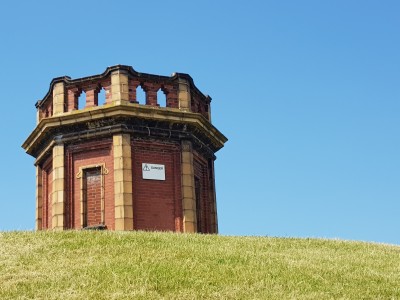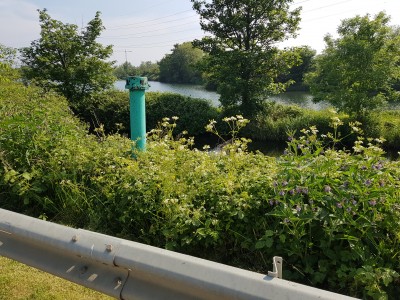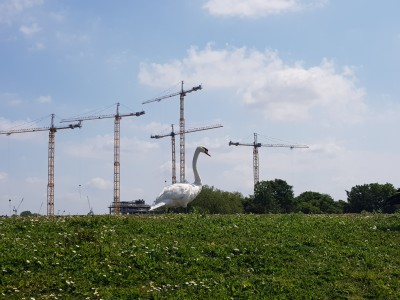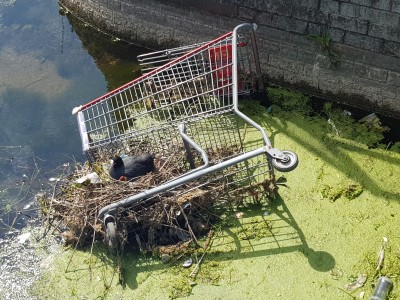As I’ve noted before, the Wetlands’ site is a working reservoir as well as being a nature reserve and, of course, now, a dance ‘studio’. For all my talk of the necessity of quietness in my choreographic relationship with the site, it’s also apparent that there are moments of noisy, energetic intervention. This video sketch shows that it’s not only the non-human wildlife that influences how I can move around: this footpath is closed because of Thames Water work on one of the reservoirs. Though you can’t here the drilling in so loudly, you can catch a glimpse of the loud orange-uniformed workers through the fencing, as well as the ducks getting on with their bobbing in the adjacent water.
The next week, I saw a group of school children singing loudly and enthusiastically on the same footpath. I don’t know for sure but they look like children from a school in Stamford Hill’s Orthodox Jewish community on the other side of the canal from the Wetlands but easily accessible across the Hackney Marshes. There’s something very beautiful about the young voices singing to the expanse of water. The birds can be just as noisy and it confirms again that quietness isn’t the only possible response to the Wetlands.





